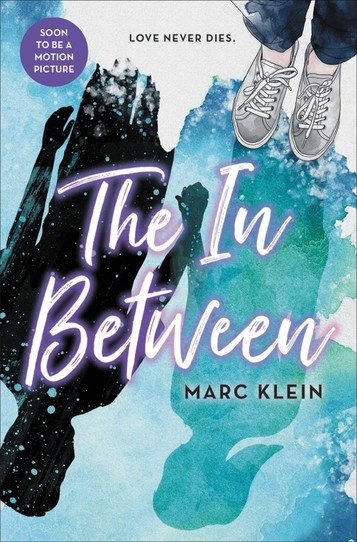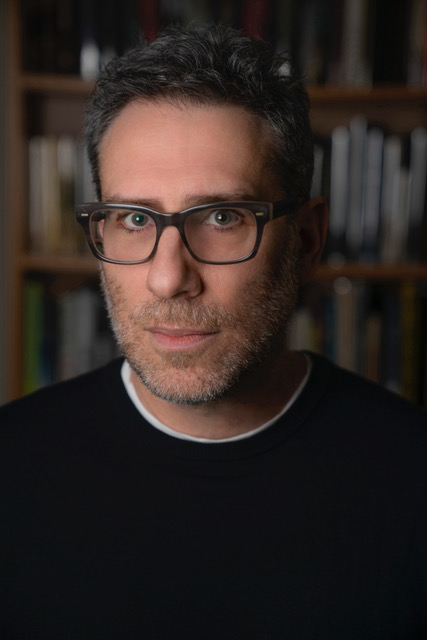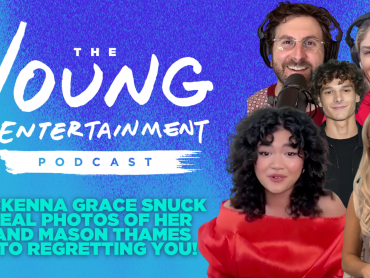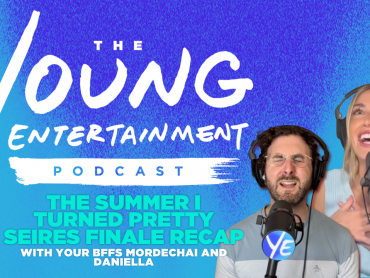Marc Klein is the author of The In Between. Marc wrote the book as well as the screenplay for the movie. The In Between follows a girl swept up in the magic of her first love, until it all comes to a tragic end that might lead her into the afterlife itself. The In Between in Marc’s debut novel. YEM was able to speak with Marc about what inspired him to write a love story, the research he did, and what he learned from the experience of having his book turn into a movie.
Young Entertainment Mag: Did you ever think your book would become a movie?
Marc Klein: I certainly hoped so! Because I actually sold the movie idea to Paramount before I sold the partial manuscript to the publisher. So I pretty much wrote the script and the book at the same time. Unfortunately, on the same week that the film was greenlit by the studio, Covid hit. At that point, nobody knew what would happen and we just assumed the production would be cancelled. Thankfully, Paramount continued to have faith in the project, and after a year of waiting, we managed to shoot the film in Atlanta under extremely tight Covid safety protocols.
YEM: How easy or difficult was it to turn your book into a screenplay?
Marc: It was very different from my earlier projects when I adapted an existing book or soon-to-be published book. This was pretty much going back and forth from one medium to another. I’d write a few scenes for the script, then move over to write a few chapters for the book, then I’d go back to the script, and so on. It was exhilarating and exhausting at the same time.
YEM: When it came to picking actors for the movie, did you have any say in the matter?
Marc: Joey King was my creative partner from the get-go. Tessa was written and crafted for her. When it came to casting, we agreed the most important element was finding a Skylar whom she had romantic chemistry with. We all saw Kyle Allen’s audition tape and flipped out for him. He has so much heart – and you can see the intelligence and sensitivity in his eyes, all the things we needed for Skylar. We immediately tried to put him and Joey together for what’s called a “chemistry read,” but because of Covid, the two of them couldn’t be in the same room. So we basically had to trust our instincts that they would work as a couple. On paper, they’re two beautiful people, but there have been many movies that didn’t work because the stars didn’t seem to connect. So it was undoubtedly a risk. Thankfully, Joey and Kyle were instant best friends. Their onscreen chemistry was just an extension of their offscreen chemistry. We all sighed relief. We knew the movie would work.
YEM: What inspired you to write a love story involving sudden death?
Marc: Many years ago, an ex-girlfriend of mine died in a tragic accident. The grief and shock were overwhelming. But in the days subsequent to her death, I believe she tried to reach out to me. I thought maybe it was just my imagination – that my grief was conjuring these strange experiences. But then I began to read up on ADC’s (after death communication) and discovered how common they really are. That began a years-long journey to find a way to explore this topic in the context of a love story. Also, as a teenager, I absolutely loved the movie “Ghost.” There hadn’t been a supernatural romance like that in so many years, and it just felt like the world was ready for a good cry.
YEM: Did you do any research into PTSD to make sure it was portrayed in a believable way?
Marc: Absolutely! I’m obsessed with research and it’s one of my favorite parts of the writing process. In addition to reading a ton of books on grief, I also interviewed a bunch of people who’d lost loved ones in traumatic ways. Interestingly, every single one of these people believed that their loved ones were still sending them signs or messages. It turns out that ADC’s are far more common than people want to admit.
YEM: The movie starts at the scene of the tragic accident; why not build up to it instead?
Marc: I’ve written a lot of love stories and romcoms, and they usually follow a fairly rigid structure and formula. And I just felt like I wanted to do something different, something less linear. So I asked myself: could I construct a love story if I opened the book (and the movie) with one of the lovers dying? That felt like the right kind of creative challenge for me.
YEM: Is the concept of the ‘in between’ something that has existed, or did you come up with it?
Marc: There are many religions and philosophical systems that believe in an “intermediate state.” Buddhists refer to this place as “The Bardo.” They believe departed spirits exist in the bardo for 49 days and then they’re reincarnated. In Islam, this place is referred to as The Barzakh.
YEM: Tessa is a foster child; what made you decide to have this aspect of her and why is it important?
Marc: Tessa’s journey is about learning to open one’s heart to love. So it made sense to give her some kind of emotional wound that would explain her fear of opening up and being vulnerable. Being rejected by one’s birth parents – and then being rejected by a succession of replacement parents – helps the reader understand why Tessa is so closed off and fearful of being hurt. It also makes us root for her. We want Tessa to have love. She deserves it. We all do.
YEM: What was it like turning your book into a movie and what did you learn from the experience?
Marc: This was my first book – and also my first Y/A movie. And the thing I learned is to never dumb down your work because of the age of your audience. Every step of the way we insisted that young readers (and audiences) could grasp deeply complex philosophical and psychological concepts. This is why I believe John Hughes’ films have stood the test of time. He treated his young audiences with great respect. He never talked down to them.
YEM: Why make something of a ghost story rather than a simple moving on from tragedy story?
Marc: A love story is only as dramatic as the conflict that separates the lovers from being together. In earlier times, class differences and social institutions gave writers many obstacles to interfere with the lovers and their plans. Unfortunately, these timeworn conflicts no longer work in modern stories. Divorce is easy. Class and social status is irrelevant in courtship. So today’s writers have to get more creative in searching for obstacles. And of course, what’s the biggest obstacle of all? Death! How does a couple sustain their relationship when one of them is dead and trapped in the afterworld?
YEM: Out of all the ways for Skyler to die, what made you decide on a car crash?
Marc: Given the world of the story, it felt the most believable and dramatic. It also allowed me to build a little bit of mystery about the accident itself. What really happened? Who was driving the other car? Why did Skylar die and Tessa survive?
YEM: How was the movie received and did you feel successful afterwards?
Marc: We’re thrilled with the response! Paramount + has told it’s been their biggest streamed film to date. Even more exciting, next month the rest of the world (outside the US) will be able to watch the film on Netflix, and the book is currently being translated into ten different languages.






